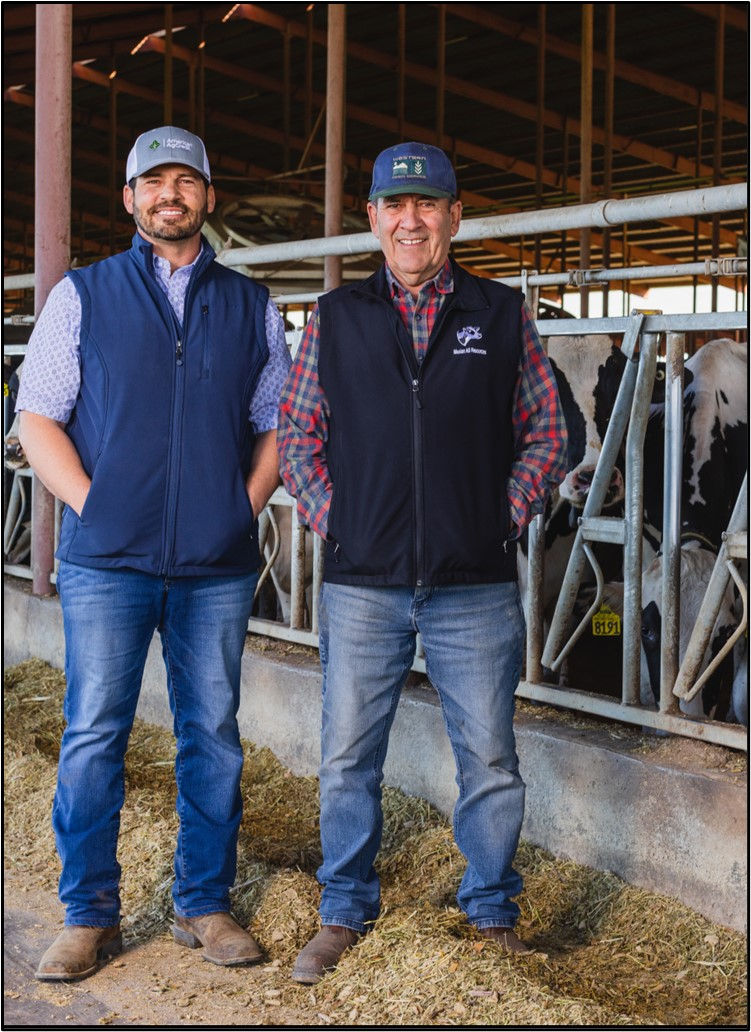Dairy Farmers’ Clean-Air Vision Comes to Life
- Dairy Cares

- Aug 7, 2024
- 4 min read
Partnership with the San Joaquin Valley Air Pollution Control District allows farmers to innovate and advance practices to benefit local residents.

Dairy farming is a labor of love. Dairy families work hard to not only meet the needs of today—creating wholesome, nutritious and affordable milk and dairy products—but to create a better future. They aim to make their operations more sustainable so farms can be passed down to the next generation. California’s dairy farmers also strive to protect their communities by adopting cleaner technologies.
These clean-air efforts have been making a big difference, especially in the San Joaquin Valley. The electrified feed mixing program is a star example. The program was recently highlighted on the cover of Progressive Dairy, where California dairy farmer Danny Martins and his family shared their farming story.
“Working alongside my parents, my wife and kids daily is priceless. Life is short and you got to do what makes you happy, and I honestly can't see myself doing anything else,” Danny told Progressive Dairy. “I've been truly blessed that my dad is still working on a day-to-day basis. He absolutely loves what he does, and I'm fortunate enough to have my best friend working alongside me.”

Danny’s parents started dairy farming in 1982 on a rented facility, milking about 75 cows. In 1991, they purchased the farm in Stanislaus County where they have since grown their operation to about 4,500 cows. Danny’s father, Valdemiro Martins supports his son’s efforts to modernize the dairy, and he is blown away with how far they have come—being the first with a fully-automated feed center and near-zero-emission daily feeding operation. This is a project that Danny hopes his three young daughters will benefit from, if they choose to carry on the family business one day.
Funding from the San Joaquin Valley Air Pollution Control District ’s Electrified Dairy Feed Mixing Program played a critical role in making Danny’s dream for a first-of-its-kind system a reality.
Electrified Dairy Feed Mixing Program
The air district’s program helps California dairies reduce diesel use during daily feeding routines. Cows are fed a ration of forages, grains, nutrient-rich agricultural byproducts, and vitamins and minerals, that are carefully planned, measured, and mixed to provide optimal nutrition. Making sure ingredients are consistently blended is key. Kings County dairy farmer Phillip Verwey developed the first pilot project on his farm in 2015, demonstrating the benefits that can be achieved by electrifying and updating feed mixing and delivery equipment. By 2018, the air district’s incentive program was launched. The program provides dairy farmers with up to 65 percent of the total cost of eligible equipment and infrastructure, up to a maximum cost effectiveness of $30,000 per ton of emissions reduced.
To date, 17 projects have been implemented on California dairies through the program, resulting in a total annual emission reduction of 164 tons. That’s equivalent to removing 1,000 heavy-duty trucks from the road. Most of the emissions reduced are nitric oxide or nitrogen dioxide (collectively, NOx). This means the program is reducing smog-forming gases, improving air quality, while also providing climate benefits. Four more projects are under construction, and 11 more applications are under review.
Working with Dairy Farmers to Deliver Impressive Results
The Electrified Dairy Feed Mixing Program is highly successful because it offers scalability and flexibility. Farmers can design projects that best fit operational needs and improve the triple bottom line of sustainability—better serving people, cows, the environment, and farm economics. The clean-air benefits are enjoyed throughout local communities, and the cleaner, quieter work environment is a direct benefit to employees. The efficiency achieved also helps to free up some employee time, allowing them to focus on other important tasks. The cows benefit from increased feed consistency, resulting in better nutrition and more consistent milk production. All these advantages help to ease management challenges and create more sustainable farms.

Danny Martin’s project was the first to take feed-system automation, electrification, and efficiency to the next level. Here’s how it works:

The farm’s nutritionist sends ration information to the feed center.
The automated feed center has 12 commodity bays for feed ingredients with an auger in each bay, 10 walking floor trailers, one electric yard truck, one electric feed conveyer belt and diverter table, and two stationary electric feed mixers.
Feed ingredients are each weighed in their respective bay and taken to the conveyer. Once a mixer has been loaded, the diverter table switches over to the next mixer.
A 14-bin microsystem is also used to add vitamins and minerals to the feed based on pen-specific nutrient needs.
Batches are made in approximately 10 minutes, ready for delivery.
When the feeder employee arrives, he does a quick walk around to make sure all ingredients are pushed up in the bays and the trailers are all connected. Then he jumps in the delivery truck and starts making his rounds.
An electric yard truck is used to load and move trailers.
Danny can oversee the operation from his office that sits above the mixers and trailers, and he receives reports on his phone.
For Danny, it’s ultimately about making dairy farming an even more rewarding way of life and knowing that his family is helping clean the air and creating an even better place to live and work.
Dairy farmers are proud to partner with the San Joaquin Valley Air Pollution Control District in delivering cleaner air.




Comments